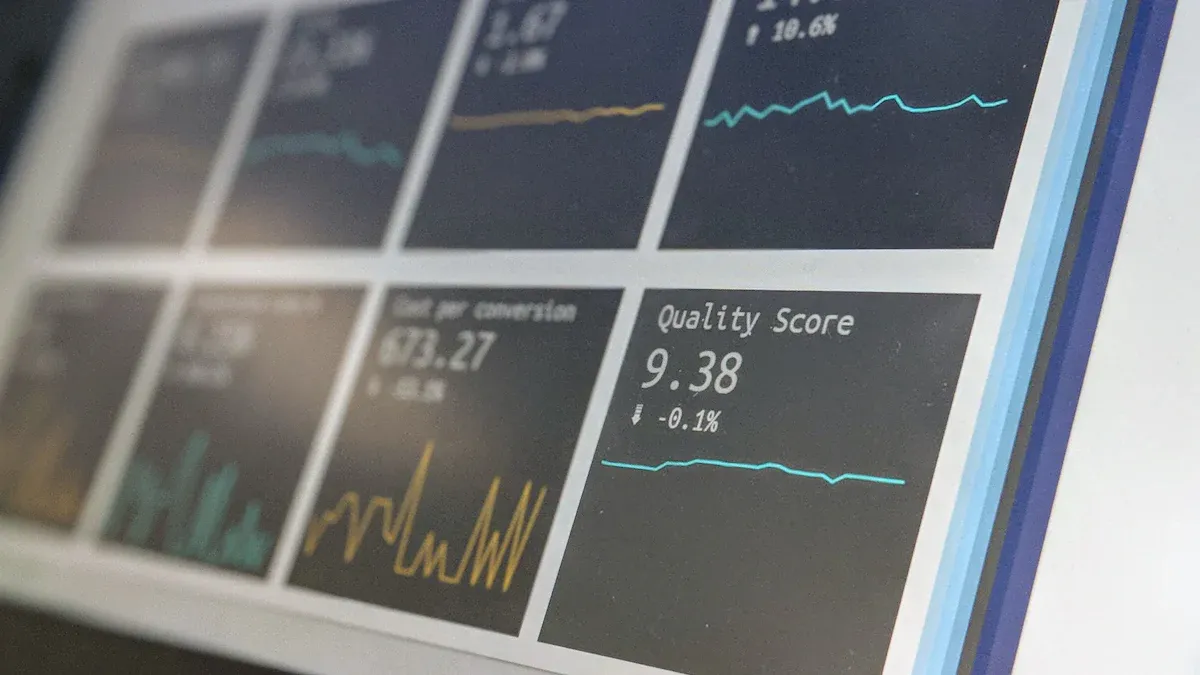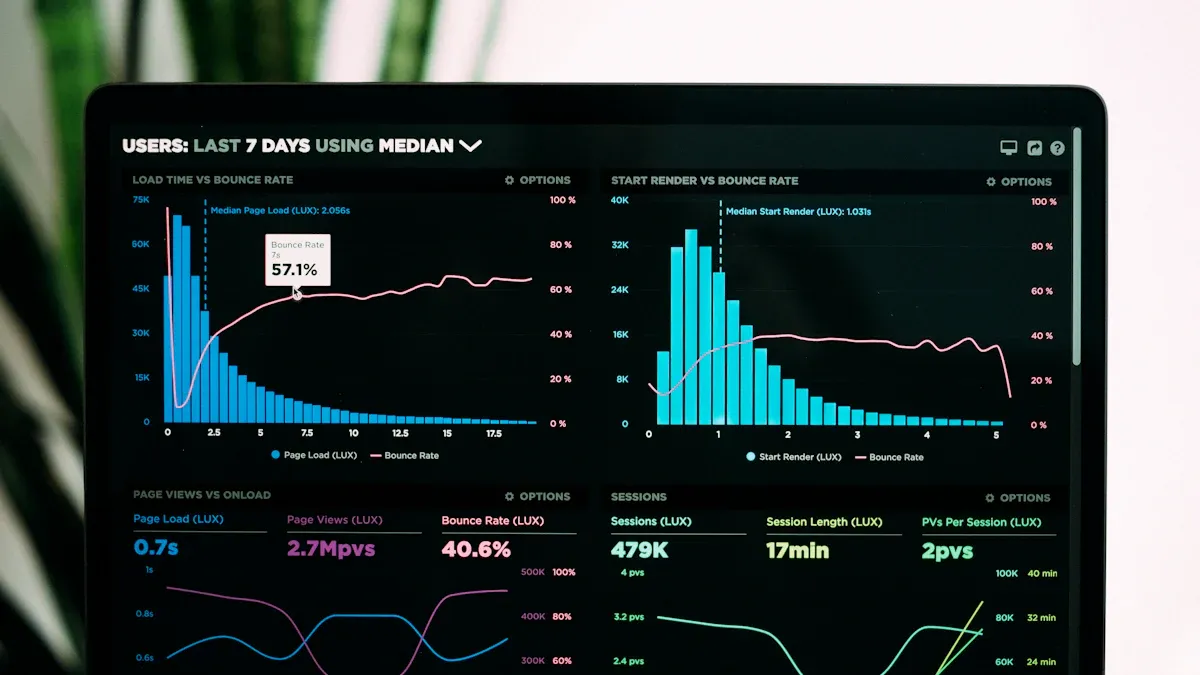
Sentiment analysis transforms the noise of customer reviews into a clear product roadmap. This technology enables data-driven decision-making. It moves product decisions away from guesswork.
Sentiment analysis systematically quantifies customer emotions. This process provides user-centric insights about a product. Customer sentiment analysis reveals the true sentiment behind customer feedback. A product manager uses customer sentiment analysis to understand each customer. This helps them build a better product. The customer's sentiment directly influences product development decisions.
Understanding Sentiment Analysis

Sentiment analysis is an automated process. It extracts and categorizes opinions from text at a large scale. This technology identifies the sentiment within customer feedback as positive, negative, or neutral. A product manager can use this tool to understand the true feelings of each customer.
Analogy Corner 💡 Think of sentiment analysis as having thousands of customer interviews summarized for you instantly. It reveals not just what a customer talks about, but also their emotional tone toward your product.
This process is essential for data-driven decision-making. It quantifies how a customer feels about specific product attributes. A simple star rating does not explain why a customer is unhappy. Customer sentiment analysis provides that crucial context. For example, it can perform fine-grained analysis to distinguish between "slightly negative" and "very negative" sentiment. It also enables aspect-based analysis, linking a specific sentiment to a product feature like "battery life" or "user interface". This detailed insight gives product managers the confidence to make informed decisions. The customer sentiment analysis of product reviews offers a clear path forward.
Several methods power sentiment analysis. Each approach helps decode customer sentiment with increasing sophistication.
- Lexicon-Based Methods: These use dictionaries of words. Each word has a pre-assigned sentiment score (e.g., "amazing" is positive, "awful" is negative). The system calculates an overall sentiment score from the text.
- Machine Learning (ML): Advanced models like Convolutional Neural Networks (CNNs) or Long Short-Term Memory (LSTMs) learn from pre-labeled data. They can understand context, nuance, and even sarcasm in customer reviews. This makes the sentiment analysis more accurate.
- Hybrid Approaches: These combine lexicon-based rules with ML models. This blend enhances the accuracy of the customer sentiment analysis, providing a robust understanding of customer feelings about the product.
Guide to Customer Sentiment Analysis
A product manager can transform raw customer feedback into a strategic asset. This guide outlines a four-step process. It turns customer sentiment into actionable product improvements. Following these steps helps make data-driven decisions.
Step 1: Gathering Feedback Data
The first step is collecting comprehensive customer feedback. A product manager needs to gather data from various sources. This ensures a complete view of the customer experience. Unfiltered feedback often provides the most honest insights.
Common sources for customer feedback include:
- Surveys and Feedback Forms: These directly ask a customer for their opinions on specific topics.
- Social Media and Reviews: Platforms like Twitter or online review sites offer spontaneous customer sentiment.
- Customer Support Interactions: Support tickets, chat logs, and call transcripts reveal customer frustrations and problems with the product.
- User Behavior Data: Actions like rage-clicking or high bounce rates can indicate negative sentiment without a single word written.
After gathering data, a product manager must prepare it for sentiment analysis. Raw text is often messy. Cleaning the data is essential for accurate results.
Data Prep Checklist 🧹
- Tokenization & Normalization: Break text into words. Convert all text to lowercase. Remove punctuation and common "stop words" like 'the' or 'is'.
- Handling Missing Data: Remove incomplete entries to avoid skewing the analysis.
- Ensuring Privacy: Anonymize all personally identifiable information (PII) to comply with regulations like GDPR.
This preparation ensures the sentiment analysis models receive clean, high-quality data. The quality of the input directly affects the quality of the insights.
Step 2: Applying Attribute Analysis
This step is the most crucial part of the process. Attribute analysis, also known as Attribute Sentiment Scoring, connects sentiment to specific product features. It answers why a customer feels a certain way. A general sentiment score is useful. A sentiment score tied to "battery life" is actionable. This level of detail is vital for a successful product.
The technical process for this sentiment analysis involves several steps:
- Attribute Extraction: The system identifies nouns in the user feedback (e.g., 'camera', 'UI', 'speed'). It counts their frequency to find the most discussed product attributes.
- Lemmatization: It reduces words to their base form. For example, 'running' and 'ran' both become 'run'. This groups related terms for better analysis.
- Negation Handling: The model learns to identify negations. It understands that "not good" expresses a negative sentiment.
- Polarity Calculation: The system assigns a sentiment score (positive, negative, or neutral) to each sentence containing a product attribute.
This detailed customer sentiment analysis reveals exactly how a customer feels about each part of the product. It moves beyond a simple star rating.
Step 3: Visualizing Sentiment Data
Data visualization turns complex numbers into a clear story. A product manager can use charts to quickly identify priorities. One of the most effective tools is a quadrant chart. This chart maps feature importance against its sentiment score.
A product manager can create this chart with a few calculations:
- Define Axes: The X-axis shows the Sentiment Score. The Y-axis shows an Impact Score, often based on how frequently a customer mentions a feature.
- Calculate Scores: The system calculates the average sentiment for each feature. It also calculates the mention frequency or another impact metric.
- Categorize into Quadrants: Each feature lands in one of four quadrants, revealing its strategic priority.
| Quadrant | Sentiment | Impact | Action |
|---|---|---|---|
| Address Immediately | Negative | High | Urgent action is needed. This is a top priority. |
| Maintain & Monitor | Positive | High | This is a core strength. Keep it strong. |
| Focus & Leverage | Positive | Low | This is an opportunity. It could become a key feature. |
| Minimize & Reassess | Negative | Low | Monitor this area. It may not require immediate resources. |
Other visualizations like line charts are also useful. They can track the sentiment for a specific feature over time. This is perfect for monitoring a product launch or software update.
Step 4: Driving Product Decisions
The final step is to use these insights to make better product decisions. The data from customer sentiment analysis provides the evidence needed to act with confidence. It helps prioritize the backlog and shape the product roadmap.
For example, a high volume of negative sentiment about 'UI navigation' becomes a clear signal. The product team can add a UI redesign to the backlog. A smartphone company once found that 40% of camera-related feedback was negative about low-light performance. This data prompted a software update. After the update, negative sentiment dropped to 15%, proving the change was successful.
Positive sentiment is equally valuable. High positive sentiment on 'integration speed' should become a key marketing point. A product manager can use the exact words a customer uses to praise a feature. This creates authentic and resonant marketing messages. This customer-centric approach ensures the product evolves in a way that truly delights its users. The entire process of sentiment analysis empowers a product manager to build a better product for every customer.
Applications for the Customer Lifecycle

Sentiment analysis offers practical applications across the entire product lifecycle. A product manager can use it to make informed decisions at every stage. This process helps align the product strategy with customer expectations.
Ideating New Features
Sentiment analysis tools help product teams discover unmet customer needs. These tools categorize feedback into themes like challenges or preferences. This analysis reveals critical areas for improvements. Insights into what a customer desires can drive the creation of innovative features for the product. This strategy helps a company stay competitive. It continuously adapts the product to evolving market demands, enhancing the overall product experience.
Prioritizing the Backlog
Customer sentiment analysis provides a clear framework for prioritizing the development backlog. A product manager can use sentiment data to rank tasks. Features with high negative sentiment require immediate attention. This data-driven approach ensures that engineering efforts focus on improvements that directly boost customer satisfaction. It transforms subjective feedback into an objective roadmap for the product.
Analyzing Competitors
A company can gain a significant edge by analyzing competitor reviews. This process involves tracking the sentiment around a competitor's product. It helps identify recurring weaknesses and gaps in their product experience.
For example, one brand discovered a competitor had very slow technical support response times. The brand capitalized on this weakness. It offered same-day responses and captured customers who were unhappy with the slow service.
This customer sentiment analysis informs a better product strategy and improves the customer experience.
Monitoring Product Launches
Real-time sentiment monitoring is crucial after a product launch. A product manager can track customer sentiment across social media and reviews. This provides immediate feedback on the new product. Key metrics help measure the launch's success.
- Net Sentiment Score: This shows the overall balance between positive and negative sentiment.
- Positive-Negative Ratio: This KPI tracks the proportion of positive feedback to negative feedback.
Tracking these metrics helps gauge customer satisfaction. The team can make rapid improvements to the product based on this live sentiment data.
Getting Started with Tools and Practices
Selecting the right technology and adopting a clear process are essential for success. A product manager can turn sentiment data into a powerful asset for product improvements.
Choosing the Right Tools
A product manager must select a tool that aligns with the company's product strategy. The market offers many sentiment analysis tools, each with unique strengths.
- Sprout Social: This tool uses AI to detect emotion in social media discussions. It helps a product team understand customer sentiment, even in complex phrases.
- SurveySensum: This platform analyzes open-ended feedback from surveys and chats. It provides real-time sentiment reports with high accuracy.
- Amplitude: This product analytics platform helps teams test feature releases. It gauges customer sentiment to measure the impact of new product updates.
Evaluation Checklist ✅ When choosing a tool, a product manager should evaluate its accuracy, integration capabilities with existing systems, and cost-effectiveness. The right tool must handle context, sarcasm, and industry-specific terms to provide a true picture of customer satisfaction.
Implementing Best Practices
A powerful tool is only effective with a solid strategy. A product manager must avoid common pitfalls, such as relying too much on technology or failing to understand the context behind customer feedback. Human emotions are complex, and a successful sentiment analysis program acknowledges this.
To ensure high-quality insights and drive real improvements, a team should follow several best practices.
- Start with Clean Data: The process begins with preparing the data. This step ensures the sentiment analysis models receive accurate information for the product.
- Update Models Regularly: Language evolves. A team must update its models with fresh data to adapt to new slang and shifts in sentiment.
- Establish a Feedback Loop: The insights must be shared. Automated alerts for significant sentiment changes can notify teams to act quickly. This workflow turns data into action, improving the customer experience and boosting customer satisfaction. A strong product strategy depends on this continuous cycle of listening and responding to the customer.
Sentiment analysis is an essential tool for building customer-centric products. It empowers a product manager to build with confidence. The process directly translates customer feelings into development priorities.
Companies like Google use this method to monitor user feedback. This provides deep insights into the customer experience and guides product improvements.
A manager can start small. They can pick one feature, analyze a small batch of customer reviews, and discover their first actionable insight.
FAQ
What is the accuracy of sentiment analysis?
Modern sentiment analysis tools are highly accurate. Their performance depends on clean data and well-trained models. A product manager can expect over 90% accuracy from leading platforms. Regular model updates maintain this high level of precision for the product team.
Can sentiment analysis understand sarcasm?
Advanced AI models can detect sarcasm. They analyze context and word choice to identify ironic statements. However, this remains a challenge. A product manager should review ambiguous results to ensure the sentiment analysis provides a true picture of customer feelings.
How much does sentiment analysis cost?
The cost of sentiment analysis varies. Some tools offer free basic plans for small data volumes. Enterprise solutions have custom pricing based on features and usage. A product manager should evaluate options that fit their team's budget and product strategy.
How can a small team start with sentiment analysis?
A small team can begin with a focused project. They can analyze reviews for one specific feature or competitor. Many tools offer free trials. This approach allows the team to gain valuable insights without a large initial investment.
See Also
Leveraging Data Analytics For Optimal Product Selection And Assortment Strategies
AI's Role In Managing Viral Trends Within The Fast Fashion Industry
Achieving Equilibrium: Predictive Analytics For Fashion Supply And Demand
Machine Learning's Impact On Predicting Fashion Trends And Increasing Sales
Is Your Artificial Intelligence Actively Analyzing Social Media Insights?